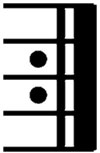When it comes to classical music, there are typically countless details written directly into the score including dynamics, phrasing and more. Some musicians see this as a challenge in creating their own interpretation of the work. On one hand, you want to remain faithful to the composer’s intention. Yet, you want to put your individual mark on each piece you perform. So, how can you interpret classical scores to be your own and not have them sound like everyone else without deviating from the score?
Think about Beethoven playing one of his sonatas. Do you think he would play them the same way every time? I have performed certain pieces for decades – sometimes thousands of times – and yet every time I play them they are unique experiences. If the notes, the rhythm, phrasing, and expression are already written in, what can you possibly do to make it different?
Some works of art like paintings or films are works of art that are complete expressions. You can do certain things like change the lighting or setting to influence the work slightly, but generally, they are finished works which don’t allow for interpretation. On the other hand, you have literary works of someone like Shakespeare, plays that have been around for centuries and have every line of dialogue and stage direction written directly into the text. Yet every performance can be dramatically different and unique in substantial ways. Even the inflection of every word is left up to the individual actors!
A musical piece is a lot like a play or a screenplay in that it’s written down as a blueprint but it’s up to the performer to interpret and bring it to life. Just as no line of dialogue would be read the same way by two different actors, a section of music could be performed dramatically differently from musician to musician. Even the balance of a single chord on the piano can be dramatically different from pianist to pianist and from performance to performance. Even though there are some dynamics written in, how you play each note from phrase to phrase is impossible to indicate with notation alone. If you’ve ever played a score on a computer with MIDI, the results sound like a machine is playing it – there is no life to the music! This is because the score is merely a skeleton for the performer to flesh out the music and bring it to life.
As a musician who uses a reed with their instrument, the particular reed they are using, how it feels that day, and many other aspects can alter a performance dramatically. As a pianist, the sound of the piano you are performing on – even if it’s the same piano you always use – can differ from day to day. The acoustics of the room, the mood of the audience, the ambient noise, all these things factor into the sound and end result of the performance. Even your own mood can inspire different realizations of the score.
As you continue to play and perform music you will see how each piece can be interpreted differently and how each performance can differ dramatically from one another.
Thanks again for joining us here at Living Pianos. If you have any questions about this topic or any others, please contact us at: Info@LivingPianos.com (949) 244-3729








